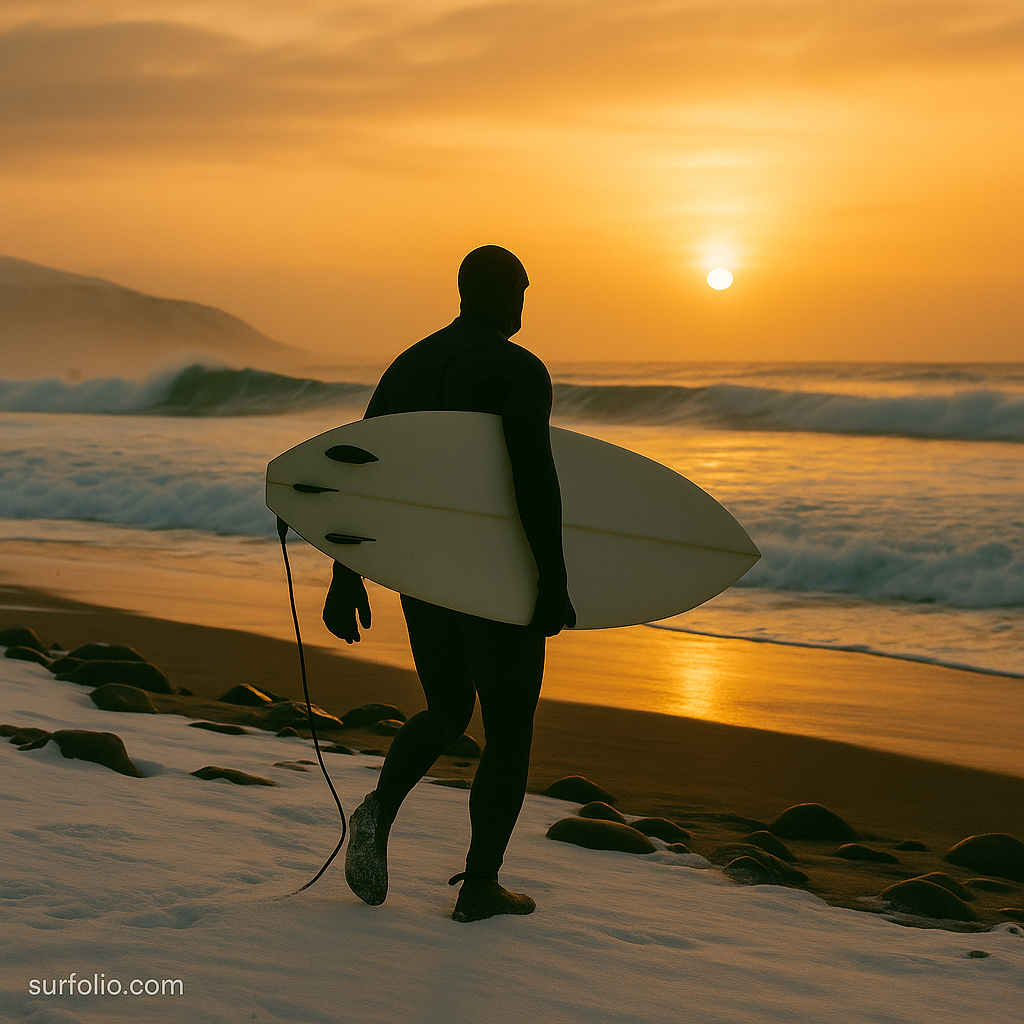
Surfing might conjure images of palm trees and tropical waves, but some of the world’s most breathtaking and challenging surf spots exist in icy waters. Cold-water surfing isn’t for everyone — it demands thicker wetsuits, tougher minds, and a deep respect for raw nature — yet the reward is unmatched solitude and untouched beauty.
From the rugged coasts of Ireland to the wilderness of Canada, these cold-water surf destinations prove that stoke doesn’t need sunshine — just passion and preparation.
1. Iceland – Arctic Perfection in Isolation
Best for: Adventurous surfers seeking untouched waves and surreal landscapes.
In Iceland, surfing feels like a journey through another planet. Snow-dusted cliffs meet deep-blue barrels, and geothermal steam rises from nearby hot springs. Surf spots like Reykjanes Peninsula and Thorli offer consistent waves powered by North Atlantic swells.
Expect frigid temperatures (40–50°F water) and winds that test your endurance — but also empty lineups and majestic beauty that few have ever experienced.
Insider tip: Rent a 6/5/4mm wetsuit, boots, gloves, and hood. After your session, thaw out in one of Iceland’s famous hot springs.
2. Tofino, Canada – Wild Pacific Power
Best for: Cold-water veterans who love nature and community.
Located on Vancouver Island, Tofino is often called the cold-water surf capital of North America. It’s surrounded by old-growth rainforest, misty shores, and powerful Pacific waves that break year-round.
Chesterman Beach and Cox Bay are popular for both beginners and pros. While the water averages around 48–54°F, the friendly local surf scene and the rugged beauty of British Columbia make it worth every shiver.
Bonus: The town embraces eco-conscious living — from local surf schools to organic cafes.
3. Bundoran, Ireland – Europe’s Emerald Barrel
Best for: Intermediate to expert surfers craving powerful reef breaks.
On Ireland’s northwest coast lies Bundoran, known for its hollow, world-class reef waves. The North Atlantic delivers consistent swells, especially from autumn to spring.
The Peak, Bundoran’s signature break, offers heavy lefts and rights that can rival Hawaii — just colder. Between sets, you’ll spot rolling green hills and friendly locals warming up over pints in surf pubs.
Water temp: 46–55°F, with unpredictable weather. But when the sun breaks through, it’s magic.
4. Norway – Arctic Beauty Beyond the Fjords
Best for: Experienced surfers seeking remote, cinematic surf adventures.
Norway’s Lofoten Islands might be the most visually stunning surf destination on Earth. Imagine snow-covered mountains plunging into turquoise water, with clean Arctic waves rolling across pebble beaches.
Unstad Beach is the heart of Norwegian surf culture, complete with a cozy surf camp and sauna just steps from the lineup.
Water temp: Around 43°F in winter. But the combination of dramatic scenery, northern lights, and uncrowded perfection makes it worth every chill.
5. Scotland – Cold, Powerful, and Pure
Best for: Hardcore surfers and photographers chasing moody perfection.
Scotland’s Thurso East is legendary — a right-hand reef break that delivers heavy barrels and clean walls when the North Atlantic swells align.
The surf community here is small but passionate, with deep respect for the raw coastal environment. You’ll find rugged cliffs, ancient castles in the distance, and waves that rival any world-class break.
Pro tip: Bring top-quality gear and backup gloves. Winds and temperatures can change fast.
6. Alaska, USA – The Final Frontier
Best for: Adventurers who thrive in extremes.
Alaska’s coastlines remain some of the most unexplored surf frontiers in the world. Breaks near Yakutat Bay and Homer offer clean, hollow waves — but getting there often means bush planes, boats, and full survival gear.
You might surf beneath glaciers or alongside seals. The isolation is complete, and the waves — when they line up — are unforgettable.
Water temp: Around 40°F or lower. Not for the faint-hearted.
7. New Zealand (South Island) – The Cool Side of Paradise
Best for: Surfers seeking a blend of quality waves and cold beauty.
While the North Island gets the tropical spotlight, the South Island offers colder, emptier perfection. Kaikoura, Dunedin, and Invercargill feature consistent reef and beach breaks with stunning alpine backdrops.
The mix of snow-capped peaks and clean Southern Ocean waves makes for an unforgettable experience.
Bonus: Marine life sightings are common — seals, penguins, and dolphins often share the lineup.
8. Tasmania, Australia – Wild and Remote
Best for: Solitary surfers craving rugged adventure.
Tasmania delivers a colder, moodier side of Australian surfing. Breaks like Shipstern Bluff are world-famous for their slabby, heaving barrels — a true test of courage and skill.
For less intimidating waves, try Marrawah or Clifton Beach, both offering consistent surf year-round.
Water temp: 52–60°F depending on the season. A 4/3mm wetsuit, booties, and gloves are standard gear.
Essential Gear for Cold-Water Surfing
Cold-water surfing demands proper preparation. Without the right gear, even the best waves can turn dangerous.
Checklist:
- Wetsuit: 5/4mm to 6/5/4mm full suit with hood.
- Booties: 5mm+ for insulation and reef protection.
- Gloves: 3–5mm neoprene gloves to maintain dexterity.
- Wax: Cold-water surf wax for grip.
- Thermos: Hot tea or coffee for post-surf recovery.
Pro tip: Pour warm water into your wetsuit before paddling out — it makes the first few minutes much more bearable.
The Allure of the Cold
Cold-water surfing isn’t just about waves — it’s about resilience, mindfulness, and connection to nature in its rawest form. When the crowds fade, the wind howls, and the ocean steam rises, every session feels like a personal victory.
These frozen frontiers remind us that surfing is a universal language — one that transcends climate and comfort.
Final Thoughts
The next time you see frost on your board or snow on the sand, remember: some of the best surfers in the world chase waves in icy seas.
Cold-water surfing teaches patience, respect, and appreciation for the planet’s untouched edges. It’s not about escaping winter — it’s about embracing it.
Because when you find your rhythm in cold water, you discover a new kind of warmth — the fire of pure surf stoke.
